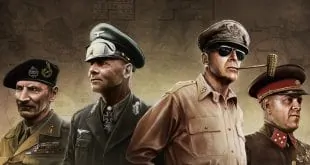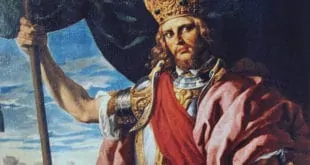A sword is made up of a chisel and a haft, with one or two edges for defending opponents. Swords have been around for millennia. More than 5,000 years, according to Wikipedia. And maybe even before then, depending on how you interpret “a long time ago” in the Star Wars opening crawls.
Many stories have been blended around certain reputation swords, belonging to both real and chimerical characters. We regale here with an account of some legendary swords that continue to captivate us to date.
Being purely military weapons all cultures have legends of unsurmountable swords. The stories of these swords are not the reminiscence of the weapons but also an account of their wielders.
Here are the top 15 legendary swords from history, mythology, and literature.
1. Zulfiqar
Zulfiqar (‘bifurcated’) is a well-known sword of Islamic history owned by Hazrat Ali. Ali is seen as the rightful heir of Prophet Muhammad by Shia Muslims and was born at the holiest place of Islam, at Kaaba in Mecca. Hazrat Ali became an inspiration to the Islamic people throughout his lifetime and he also run as the fourth Caliph from 656 to 661
Historians say Muḥammad (PBUH) presented Zulfiqar to a young Ali at the Battle of Uhud. Ali struck one of the fiercest adversaries during the battle, breaking both his helmet and his shield.
Muhammad (PBUH) remarked, “There is no hero but Ali and no sword except Zulfiqar.” Ali used the sword at the Battle of the Trench to cut a fierce Meccan opponent and his shield in two halves by most historical accounts.
The opponent was Amr ibn Abdawud, whose strength was often compared to that of a thousand men. No one had dared to fight him except Ali, who killed him with one powerful blow. Though Amr wore strong armor and carried powerful weapons, he is said to have been no match to Ali and his sword.
The scimitar is one of the oldest and best-known symbols of Islam. The sword was also used in the Battle of Karbala by Imam Hussain, and as a result, it is seen as a symbol of honor and martyrdom. And it is now believed by the Shias to be in possession of Imam Mehdi.
2. Flaming Sword
A flaming sword is a sword glowing with flame by some supernatural power. Flaming swords have existed in legend and myth for thousands of years. According to the Bible, a Cherub with a flaming sword was placed by God at the gates of Paradise after Adam and Eve were banished from it (Genesis 3:24).
“He placed at the east of the garden of Eden Cherubims, and a flaming sword which turned every way, to keep the way of the tree of life.” Genesis 3:24
Eastern Orthodox of Christianity tradition says that from the time Jesus was born, the flaming sword was removed from the Garden of Eden, making it possible for humanity to re-enter Paradise.
3. Excalibur
Excalibur is the legendary sword of King Arthur, sometimes attributed with magical powers or associated with the rightful sovereignty of Great Britain. Sometimes, Excalibur and the Sword in the Stone (the proof of Arthur’s lineage) are said to be the same weapon, but they are considered separate in most versions. The sword was associated with the Arthurian legend very early. In Welsh, the sword is called Caledfwlch.
Two swords appear in Arthurian legends: the Sword in the Stone, which only Arthur could wield, thereby proving his rightful kingship, and the sword given to him by the Lady of the Lake.
There is only one sword in some versions, while in others, the Sword in Stone is broken, and later Arthur receives Excalibur from the Lady of the Lake.
Having a magical origin, the sword was unbreakable, and its scabbard protected the king from physical harm. Morgan Le Fay, Arthur’s half-sister, stole the sword. It was recovered, but the scabbard was lost, allowing King Arthur to be mortally wounded in the Battle of Camlann.
Arthur orders one of his knights to throw back the sword in the enchanted lake, and when done so, a hand appeared from the waters to catch it, taking it beneath the water from where it had first emerged.
4. Nasril ( Andúril)
In J. R. R. Tolkien’s fictional prehistory of the world (Arda), Narsil was the sword of King Elendil of the Dúnedain who used it in the War of the Last Alliance against Sauron, the sword in a later age was reforged as Andúril. It appears in The Lord of the Rings, The Silmarillion, and Unfinished Tales.
Elendil, however, was killed during the battle, and Narsil was broken in shards. His son Isildur then used the hilt-shard of Narsil to cut the One Ring from the finger of Sauron, thus defeating and vanquishing him. The shards of Narsil were passed on as heirloom until the sword was reforged during the War of the Ring and handed over to Aragorn, who renamed it as Anduril (Sindarin for “The Flame of the West”) Aragorn receiving the sword was an action recognizing him as an heir of Isildur and the rightful king of Gondor. It is also referred to as ‘the sword that was broken.
5. The Sword of Damocles
Damocles is a figure featured in a single moral anecdote concerning the Sword of Damocles, a late addition to classical Greek culture. The figure belongs properly to legend rather than Greek myth. Damocles was a courtier in the court of King Dionysius.
The Damocles of the anecdote was an obsequious courtier in Dionysius II of Syracuse, a fourth-century BC tyrant of Syracuse. Damocles exclaimed that, as a great man of power and authority, Dionysius was truly fortunate. Dionysius offered to switch places with him for a day to taste firsthand that fortune. In the evening, a banquet was held where Damocles very much enjoyed being waited upon like a king. Only at the end of the meal did he look up and notice a sharpened sword hanging directly above his head by a single horse-hair. Immediately, he lost all taste for the amenities and asked leave of the tyrant, saying he no longer wanted to be so fortunate.
Dionysius had successfully conveyed a sense of the constant fear in which the great man lives. Cicero uses this story as the last in a series of contrasting examples to reach the conclusion he had been moving towards in this fifth Disputation. The theme is that virtue is sufficient for living a happy life. Cicero asks
“Does not Dionysius seem to have made it sufficiently clear that there can be nothing happy for the person over whom some fear always looms?”
A slightly different moral to the story of the Sword of Damocles is that “The value of the sword is not that it falls, but rather, that it hangs.”
6. William Wallace’s Sword
Though there are different sides to every story, there is one underlying truth about the tales of the Scottish hero, William Wallace. He was a man of big deeds who used a big sword.
William Wallace was portrayed by Mel Gibson in the iconic movie Braveheart. Check it below:
Our 13th century two-handed great sword is likely a sword that the fearsome hero would’ve been eager to use. With its 40-inch blade balanced by a solid steel cross guard and heavy steel pommel, this sword has tremendous potential in the hands of a skilled swordsman. The leather-wrapped ricasso allows one to choke up on the blade to offer better balance when fighting in close quarters while both guard and pommel offer themselves as stout striking points in time of need.
7. Kusanagi-no-Tsurugi
Kusanagi-no-Tsurugi (is a legendary Japanese sword as important to Japan’s history as Excalibur is to Britain’s and is one of three Imperial Regalia of Japan. It was originally called Ama-no-Murakumo-no-Tsurugi (“Sword of the Gathering Clouds of Heaven”). Still, its name was later changed to the more popular Kusanagi-no-Tsurugi (“Grass Cutting Sword”).
It was discovered from the body of a giant serpent. In the reign of the XII Emperor, the sword was gifted to Yamato Takeru, who was led into an open grassland as a trap by a warlord. The plan was to ignite the grass and burn Yamato to death. In desperation, Yamato started cutting the grass with his sword and discovered to his amazement that he could control the wind. Using this power, Yamato expanded the fire in the direction of his enemies, defeating them. It was after this incident that Yamato named the sword “Grasscutter Sword.”
Yamato was later killed in a battle by a monster when he ignored his wife’s advice to take the Grasscutter sword with him. The moral of the story: Always listen to your wife. However, In The Tale of the Heike, a collection of oral stories transcribed in 1371, the sword is lost at sea after the defeat of the Heike clan in the Battle of Dan-no-Ura, a naval battle that ended in the defeat of the Heike clan forces and the child Emperor Antoku at the hands of Minamoto no Yoshitsune.
In the tale, upon hearing of the Navy’s defeat, the Emperor’s grandmother led the Emperor and his entourage to commit suicide by drowning in the waters of the strait along with the three Imperial Regalia, including Kusanagi. Although the Minamoto troops managed to stop a handful of them and recovered two of the three regalia, Kusanagi was said to have been lost forever.
8. The Blade of Evil’s Bane
The Blade of Evil’s Bane (also known as The Master Sword or as the Sword of Time) is typically the most powerful weapon in a Zelda game for general usage; except for the Biggoron Sword, Gilded Sword, Great Fairy’s Sword, and the upgrades in A Link to the Past. The Master Sword will usually have a power level of two or three times the starting sword. Zelda states that the sword was created by Ancient Sages.
However, Skyward Sword, which takes place before the events of Ocarina of Time and A Link to the Past, reveals that the Master Sword was originally once known as the Skyward Sword, where it rested on a floating island above the clouds known as Skyloft. The backstory to A Link to the Past reveals the Master Sword’s purpose as the sword, which could combat the power of an evil person misusing the Triforce.
9. Vorpal Sword
The Vorpal Sword is the only sword in the literature that can go “snicker-snack.” It appears in what is said to be one of the greatest ‘nonsense poems’ in English: “Jabberwocky” by Lewis Carroll in Through the Looking Glass. It is the story of a young boy slaying a monster known as ‘Jabberwock’ using the Vorpal sword. Lewis Carroll published Through the Looking-Glass in 1871. Near the beginning, Alice discovers and reads “Jabberwocky.” The word “vorpal” appears twice in the poem, which describes a young boy’s quest to slay a monster. Here is the Poem (Link).
As with much of the rest of the poem’s vocabulary, the reader is left to guess the meaning of “vorpal” from the context. It is commonly assumed to mean “deadly” or “sharp” words often used to describe swords, but some readers have imagined other properties the word could describe.
Alexander L. Taylor points out in his Carroll biography The White Knight that “vorpal” can be formed by taking letters alternately from “verbal” and “gospel.” There are many speculations as to what “Vorpal” means. Lewis Carroll, however, confessed, “I am afraid I can’t explain ‘vorpal blade’ for you – nor yet ‘tulgey wood.” The vorpal sword has recently been featured in several role-playing video games.
10 The Glory of Ten powers
At last—a sword powered by the magic of love.
According to Chinese literature, the Glory of Ten Powers was a sword created by two Tibetan magicians who followed the teachings of Tonpa Shenrab Miwoche, who is said to have lived before Gautama Buddha.
Their love was so strong that a great spirit-deity inhabited the sword when they made it, which is why whoever wields it gains great magical powers. It was so feared by its wielder’s enemies that they burnt it and broke it down into a magical talisman when it was captured.
Originally called the Heavenly Sword of Gathering Clouds, this legendary blade was discovered when the god Susanoo helped a grieving family by slaying an eight-headed serpent that had eaten 7 of their daughters. After slaying the beast, Susanoo found this sword inside of it. It was later gifted to Yamato Takeru, who used the sword to escape an ambush by a rival warlord. During the fight, he chopped at the grass around him in an attempt to escape and discovered that the sword could control the wind. He renamed it Kusanagi, the Grass-Cutting Sword.
The sword is said to have been eventually captured and burned by the family’s enemies, and the sword is made into a magic talisman. Said in the 1930s work of Tang Hao to be possessed by Hua Tuo, the famous Chinese physician who lived during the Three Kingdoms era. Chinese literature is littered with references to this amulet, just as English works often mention Excalibur.
11. The Sword Of Goujian
Chinese history is full of legends about legendary blades, and this sword has defeated all of them. It is believed that the sword belonged to King Goujian, who ruled China’s Yue state for more than 2500 years.
Archaeologists found it in 1965. It was in an astonishingly good condition for a two-and-a-half millennia-old piece of iron. One of the archaeologists who found it even saw the blade cut when he tried testing the strength of its edges.
Legend says that the sword was made with magical powers, which helped it to last for so many years. However, scientists claim that its bronze carvings helped keep it from rusting away. It is the most famous sword in China, regardless of its origin.
12. Tomoyuki Yamashita’s Sword
Yamashita Standard refers to the law that prosecutes generals and commanders who commit atrocities against their troops during wartime. After the controversial execution by General Yamashita, the Imperial Japanese forces defeated the British army and seized control of Singapore during WWII, the Yamashita Standard became well-known.
Tomoyuki Yamashita was also the last Japanese general to surrender following the war’s end. He was also called The Tiger of Malaya. He was the most fearsome Japanese commander. After his surrender, he was captured by the US and executed in 1946. However, his sword, which was a significant part of his fame, was kept by a general from the US before it began making its way into military museums worldwide. It is one of the most recognizable WWII relics.
13. Gram Sword
In Norse Mythology, the god Odin plunged a sword into the tree Barnstokkr in the hall of the Völsungs during a wedding and declared that he who could take it out would receive it as a gift. Only Sigmund was able to do so.
Later, during a battle, Sigmund fights an older man, who is actually Odin in disguise; Odin shatters the sword, and Sigmund is killed by others. As he lies dying, he tells his wife that his son would one day make a great sword from the fragments.
The prophecy was fulfilled as his son Sigurd reforged the sword. Handle, guard, and pommel were plated in silver and highlighted with 24-karat gold details. The sword’s stainless steel blade was massive and jagged-edged, and Sigurd killed the dragon Fafnir with it. In the Nibelungenlied, Siegfried’s sword is called Balmung; in Richard Wagner’s Ring Cycle, it is called Nothing.
14. Durendal
Durendal or Durandal is the sword of Charlemagne’s paladin Roland in the literary cycle known as the Matter of France. According to Ludovico Ariosto’s Orlando Furioso, it once belonged to Hector of Troy and was given to Roland by Malagigi (Maugris). The name probably comes from the French verb “durer,” “to endure.”
In The Song of Roland, the sword is said to contain within its golden hilt one tooth of Saint Peter, the blood of Saint Basil, hair of Saint-Denis, and a piece of the raiment of the Blessed Virgin Mary. In the poem, Count Roland attempts to destroy the sword to prevent it from being captured by the ambushing Saracens and creates La Brèche de Roland in the Pyrenees in the process. But Durendal proves indestructible, so he hides it beneath his body along with the oliphant, the horn used to alert Charlemagne. Local folklore claims Durendal still exists, preserved in Rocamadour, France. An inscription on Ogier Dane’s sword Curtana read. My name is Cortana, of the same steel and temper as Joyeuse and Durendal.
15. Lightsaber
A lightsaber is a popular weapon introduced in the sci-fi series Star Wars and the franchise’s Expanded Universe. The lightsaber consists of a polished metal hilt that projects a blade of energy (plasma) about one meter long.
The lightsaber is the signature weapon of the Jedi order and their Sith counterparts, both of whom can use them for offense or to deflect blaster bolts. Its distinct appearance was created using rotoscoping for the original trilogy, and digitally for the prequel trilogy.
The lightsaber first appeared in the original Star Wars film (1977) and every Star Wars movie to date features at least one lightsaber duel. In 2008, a survey of approximately two thousand film fans found it to be the most popular film weapon.
The lightsaber’s blade cuts through most substances without resistance. It leaves cauterized wounds in flesh but can be deflected by another lightsaber’s blade, or an energy shield or wall.
Conclusion
Though swords are rarely used in the modern-day, they are imaged in movies and fictional works from all around the world, the most famous of them are displayed above.
What about you; What are your favorite swords from the list below? Have we missed something?
Let us know in the comments form below:
Image sources: [1], [2], [3], [4], [5], [6],[7], [8]. [9], [10], [11], [12], [13], [14]
 The Education Network Best Ten List Articles
The Education Network Best Ten List Articles





















![Dracula, Vlad The Impaler [10 Less Known Facts]](http://ten.info/wp-content/uploads/Vlad-The-Impaler-310x165.webp)

